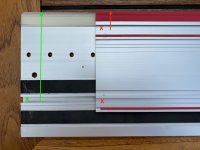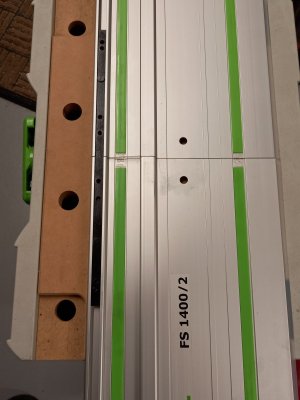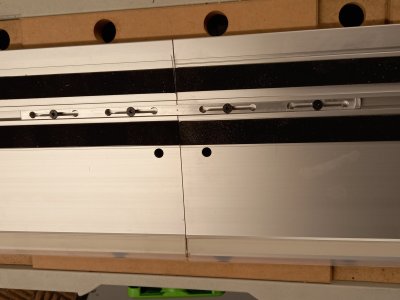smorgasbord
Member
- Joined
- Jan 7, 2022
- Messages
- 1,257
With my CNC, I've gone down the path of making accessories for the now-defunct Inca line of tablesaws, once made in Switzerland. Things like new insert plates and miter bars (they use a 20mm T bar that's non-standard).
I'm wondering if there would be a market for a better-designed/built guide rail joining system. I hear the Makita is the best, even though Festool's second generation is improved. Unfortunately, I'm not yet a track saw user (it's on the to-buy list).
I'm soliciting ideas for better guide rail attachment joiners. I can machine aluminum, although I've found that using Delrin often has a lot of advantages when absolute strength isn't paramount. The self-lubricating qualities mean a tighter fit than with aluminum can be possible, and I think it's even more stable with temperature changes. I know people complain about grub screws leaving marks on the rails, but there are also, I believe, alignment issues that require specific procedures to perform when assembling to have the rails in line with each other.
I'd like to hear what's wrong with the existing solutions, what can be done to improve them (I think I read that combing one piece from Makita and one from Festool is optimal, if expensive), and any other ideas people have. Maybe it would be possible to come up with a new design that I would share freely, and perhaps manufacture for interested woodworkers.
I'm wondering if there would be a market for a better-designed/built guide rail joining system. I hear the Makita is the best, even though Festool's second generation is improved. Unfortunately, I'm not yet a track saw user (it's on the to-buy list).
I'm soliciting ideas for better guide rail attachment joiners. I can machine aluminum, although I've found that using Delrin often has a lot of advantages when absolute strength isn't paramount. The self-lubricating qualities mean a tighter fit than with aluminum can be possible, and I think it's even more stable with temperature changes. I know people complain about grub screws leaving marks on the rails, but there are also, I believe, alignment issues that require specific procedures to perform when assembling to have the rails in line with each other.
I'd like to hear what's wrong with the existing solutions, what can be done to improve them (I think I read that combing one piece from Makita and one from Festool is optimal, if expensive), and any other ideas people have. Maybe it would be possible to come up with a new design that I would share freely, and perhaps manufacture for interested woodworkers.



